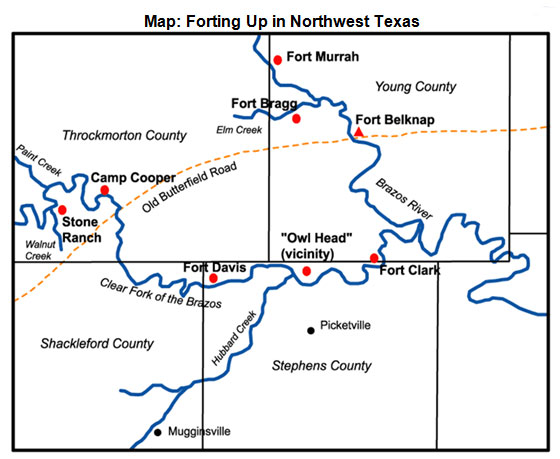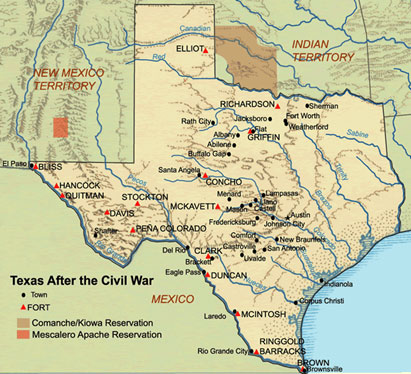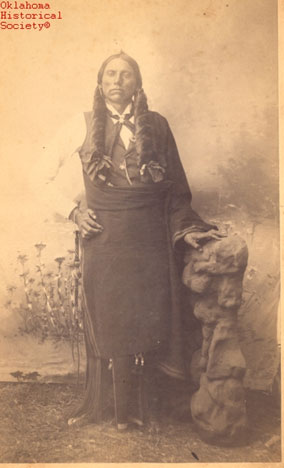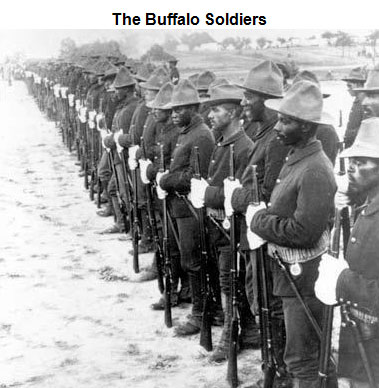
Source: fortingup-lg, Texas Beyond History
During the years of the Civil War, the Texas frontier was under siege. Danger did not always come in the form of Union troops, but American Indians became a constant threat to those who remained on the Texas frontier. To protect them, many of the frontier families participated in “Forting Up” in which the families created forts where several families lived together.

Source: fortingup-lg, Texas Beyond History
Analyzing the map: What geographic feature does each of the forts have in common? Why was this geographic feature important to the forts?

During the Civil War, Comanche and Kiowa Indians frequently raided settlers who lived along the western frontier of Texas. After the war ended, the American-Indian raids, however, did not. Westward expansion increased, and the Texas frontier was a perfect location for expansion. Tensions between whites and American Indians increased even more after many of the Confederates returned from the war. Several battles took place between the U.S. Army and the American Indians.

Source: Frontier Post Civil War, Texas Beyond History

Source: PA014, Oklahoma State University
The Red River War was one of the last major battles between the U.S. Army and Comanche. There were many battles across the Texas Panhandle in this war. Led by Quanah Parker, pictured here, the Comanche surrendered at Fort Sill. Parker later served as a mediator between the Comanche, white settlers, and officials.
The American Indians were later placed on Indian reservations; land set aside to house American Indians.
Quanah Parker was the son of Comanche Chief Peta Nocona and Cynthia Ann Parker, who had been captured by the Comanche as a child.

Source: Liberators of Cuba, Texas of Parks and Wildlife Department
Another group that was important to the Texas’ westward expansion was the Buffalo Soldiers. Read the excerpt below from the Buffalo Soldiers National Museum website.
“African Americans have served proudly in every great American war. In 1866, through an act of Congress, legislation was adopted to create six all African American Army units. The units were identified as the 9th and 10th cavalry and the 38th, 39th, 40th, and 41st infantry regiments. The four infantry regiments were later reorganized to form the 24th and 25th infantry regiments.
These fighting men represented the first Black professional soldiers in a peacetime army. The recruits came from varied backgrounds including former slaves and veterans from service in the Civil War.”
![]() Watch this video to learn more about the Buffalo Soldiers and their involvement with the Texas frontier, and then answer the following questions in your notes.
Watch this video to learn more about the Buffalo Soldiers and their involvement with the Texas frontier, and then answer the following questions in your notes.
Source: Buffalo Soldiers: The Unknown Army- Texas Parks and Wildlife, YouTube
Interactive popup. Assistance may be required.
Initially, the Buffalo Soldiers were responsible for protecting the settlers along the western Texas frontier.
Interactive popup. Assistance may be required.
American Indians named the African-American soldiers Buffalo Soldiers because the soldiers were fearless and fought with bravery. They likened the physical characteristics of the buffalo to the soldiers, and the name was a term of respect because the American Indians respect the buffalo.
Interactive popup. Assistance may be required.
The Buffalo Soldiers built homes, bridges, and other buildings that the white officers used when they came to the Texas frontier.
Interactive popup. Assistance may be required.
Buffalo Soldiers not only had to fight against American Indians along the frontier, but they also had to fight against racism and prejudice they faced from whites in Texas.
The Buffalo Soldiers in Texas helped to protect the western frontier in Texas. With the respect that they earned from American Indians, the Buffalo Soldiers served as peacekeepers between the American Indians who lived on the reservations. The soldiers also protected Texans.